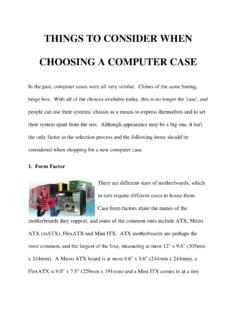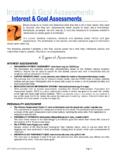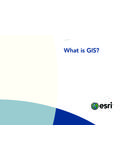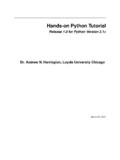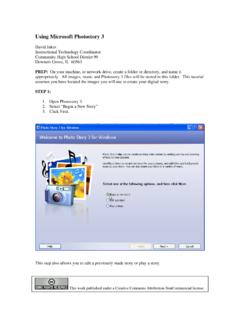Transcription of Developing computational thinking in the …
1 Developing computational thinking in the classroom: a framework ! June 2014. ! Working group of authors: !Prof. Paul Curzon Queen Mary University of London, School of Electronic Engineering and Computer Science Teaching London Computing Project ( ), funded by the Mayor of Lon- don and Department of Education through the London School's Excellence Fund !Mark Dorling BCS, The Chartered Institute for IT and Computing At School Network of Excellence project ( ), funded by the Department for Education, industry partners and awarding bodies Digital Schoolhouse London Project ( ), funded by the Mayor of London and Department of Education through the London School's Excellence Fund !
2 Thomas Ng West Berkshire Council School Improvement Adviser (ICT & Assessment). !Dr. Cynthia Selby Bay House School and Sixth Form, Gosport, Hampshire Southampton Education School, University of Southampton !Dr. John Woollard Southampton Education School, University of Southampton BCS, Chartered Institute for IT Barefoot Computing project ( ), funded by the De- partment for Education !! !! !! !! !! !! Copyright 2014 Computing At School This work is licensed under the Creative Commons Attribution-Non Commercial license; see http://cre- for details.
3 ! ! Introduction computational thinking sits at the heart of the new statutory programme of study for Computing: A high quality computing education equips pupils to use computational thinking and creativity to under- stand and change the world (Department for Education, 2013, p. 188). This document aims to support teachers to teach computational thinking . It describes a framework that helps explain what computational thinking is, describes pedagogic approaches for teaching it and gives ways to as- sess it. Pupil progression with the previous ICT curriculum was often demonstrated through how' (for example, a soft- ware usage skill) or what' the pupil produced (for example, a poster).
4 This was partly due to the needs of the business world for office skills. Such use of precious curriculum time however has several weaknesses. Firstly, the country's economy depends on technological innovation not just on effective use of technology. Secondly, the pace of technology and organisational change is fast in that the ICT skills learnt are out of date before a pupil leaves school. Thirdly, technology invades all aspects of our life and the typically taught office practice is only a small part of technology use today.
5 In contrast, the new Computing curriculum has an enriched computer science element. Computer science is an academic discipline with its own body of knowledge that can equip pupils to become independent learners, evaluators and potentially designers of new technologies. In studying computer science, pupils gain not only knowledge but also a unique way of thinking about and solving problems: computational thinking . It allows the pupils to understand the digital world in a deeper way: just as physics equips pupils to better understand the physical world and biology the biological world.
6 Simon Peyton-Jones gives an account of why learning com- puter science and computational thinking is a core life and transferable skill in a talk filmed at TEDxExeter (Peyton-Jones, 2014). To prepare our pupils to understand the consequences of technological change, adapt when using technolo- gies, develop new technologies or even to work in jobs that haven't yet been invented, not only does the what?' and how?' of the subject need to be taught, pupils also need to develop techniques to ask and be able to answer the question why?
7 '. computational thinking supports doing so. computational thinking skills are the set of mental skills that convert complex, messy, partially defined, real world problems into a form that a mind- less computer can tackle without further assistance from a human. (BCS, 2014). Today, however, there is an interpretation, led by the popular media, implying that the new computing curricu- lum focuses on coding' (Crow, 2014; Nettleford, 2013). This gives a misleading message, especially to those new to the discipline. In contrast, our framework presented below aims to support teachers' understanding of computational thinking across the full breadth and depth of the subject of Computing and offers a way to easily and effectively integrate it into classroom practice.
8 ! ! ! The framework There are four interconnected stages of development to our computational thinking framework: Stage 1: Definition Stage 2: Concepts Stage 3: Classroom techniques Stage 4: Assessment We overview each in the subsequent sections. Stage 1: Definition To support the sharing of curriculum materials and classroom practices, an agreed definition that is suitable for the classroom is needed. We use the interpretation forwarded by Professor Jeannette Wing, who originally popularised the idea of computational thinking .
9 She defines it as: the thought processes involved in formulating problems and their solutions so that the solutions are represented in a form that can be effectively carried out by an information-processing agent (Cuny, Snyder, Wing, 2010, cited in Wing, 2011, ) .. these solutions can be carried out by any processing agent, whether human, computer, or a combination of both (Wing, 2006). We chose this definition because it is based on Wing's original definition and has gained consensus amongst academics. Its emphasis is on pupils performing a thought process, not on the production of artefacts or evi- dence.
10 It therefore fits the direction of change in the current curriculum development. Stage 2: Concepts The next stage is to define the core concepts involved in computational thinking . Based on a review of acade- mic references, Selby and Woollard (2013) suggest the following are key: algorithmic thinking evaluation decomposition abstraction generalisation We outline these concepts with examples below, giving linked classroom techniques in the next section. Algorithmic thinking is a way of getting to a solution through clear definition of the steps - nothing happens by magic.
